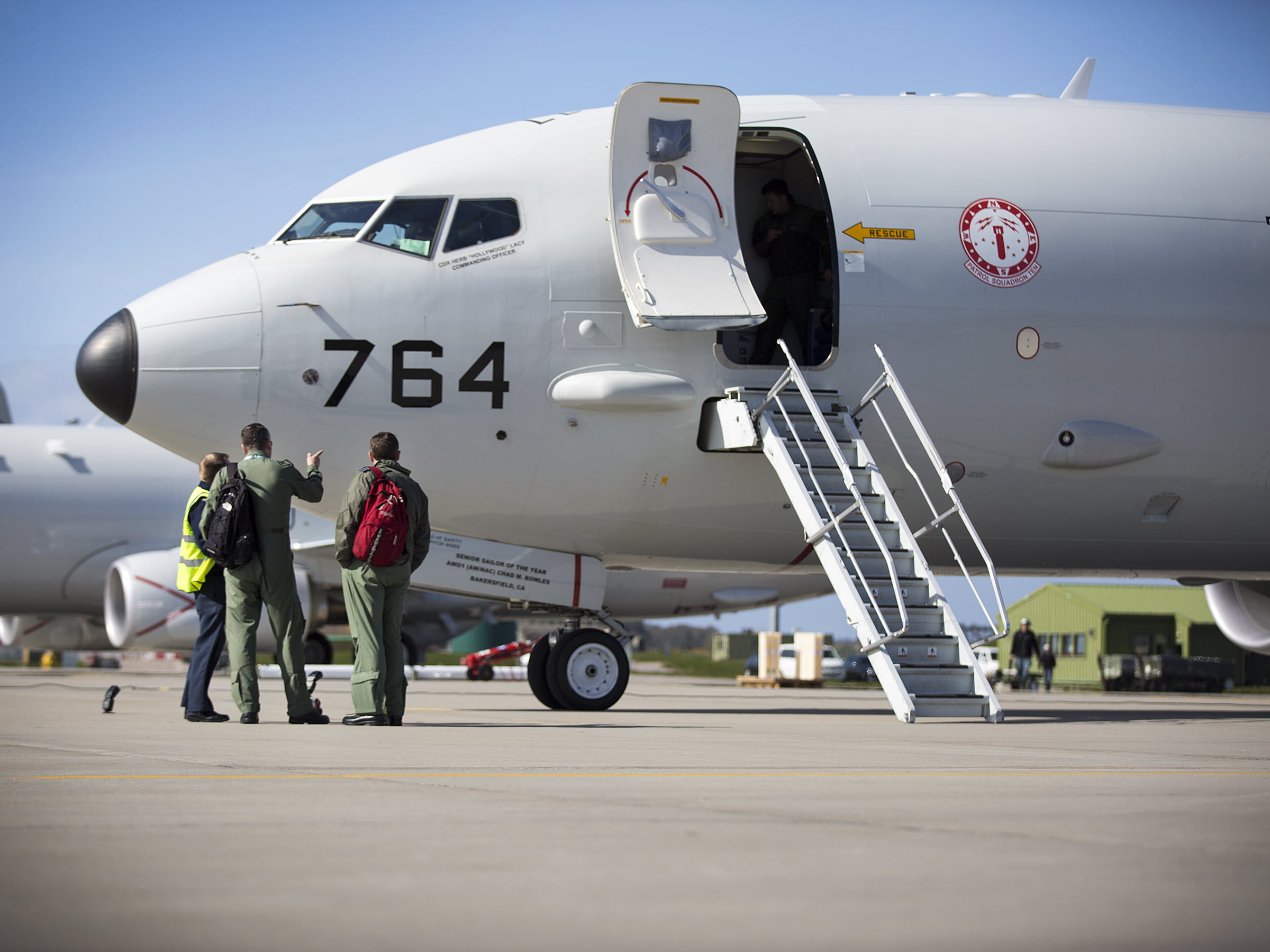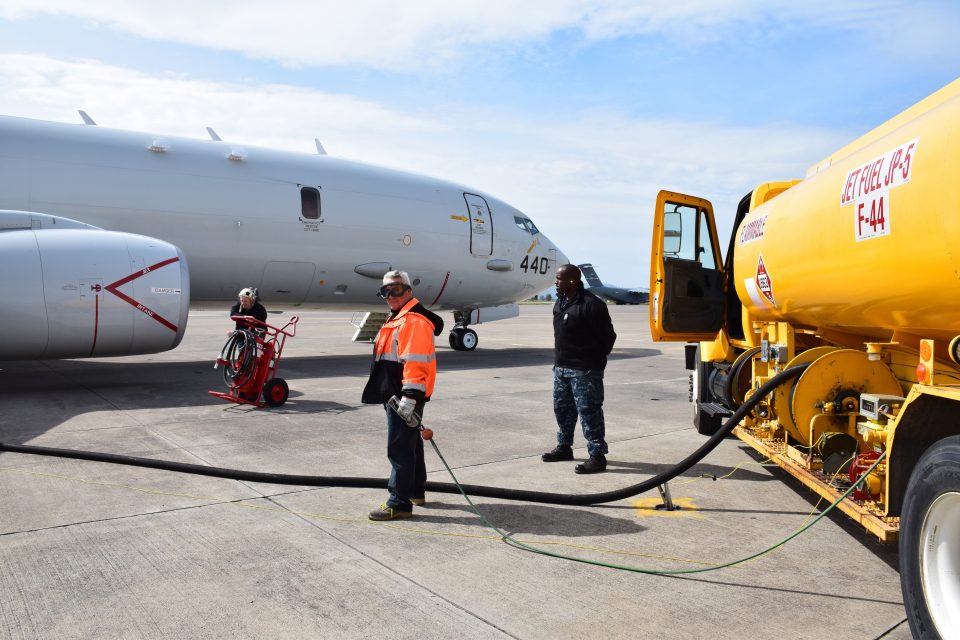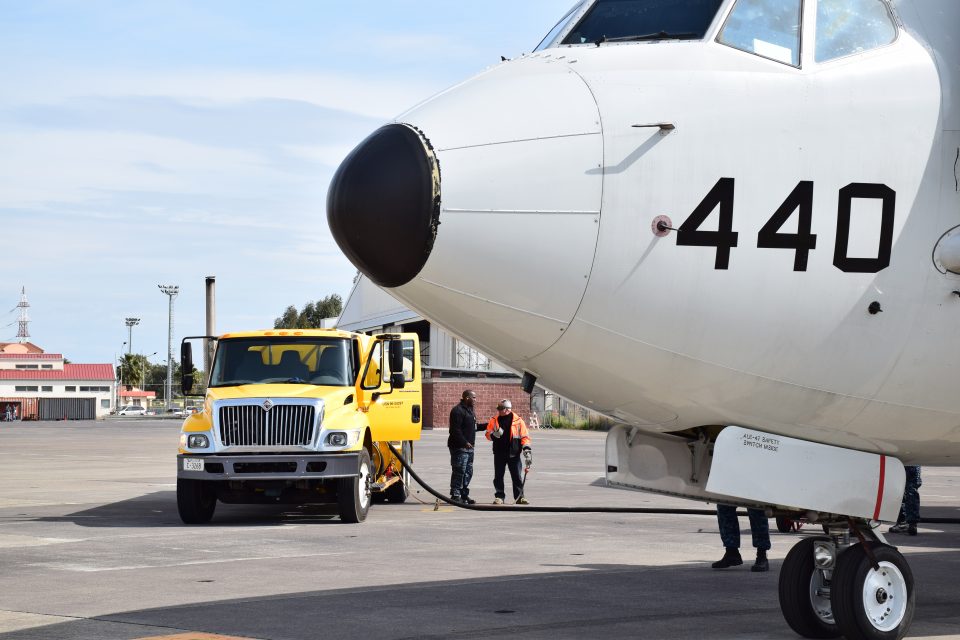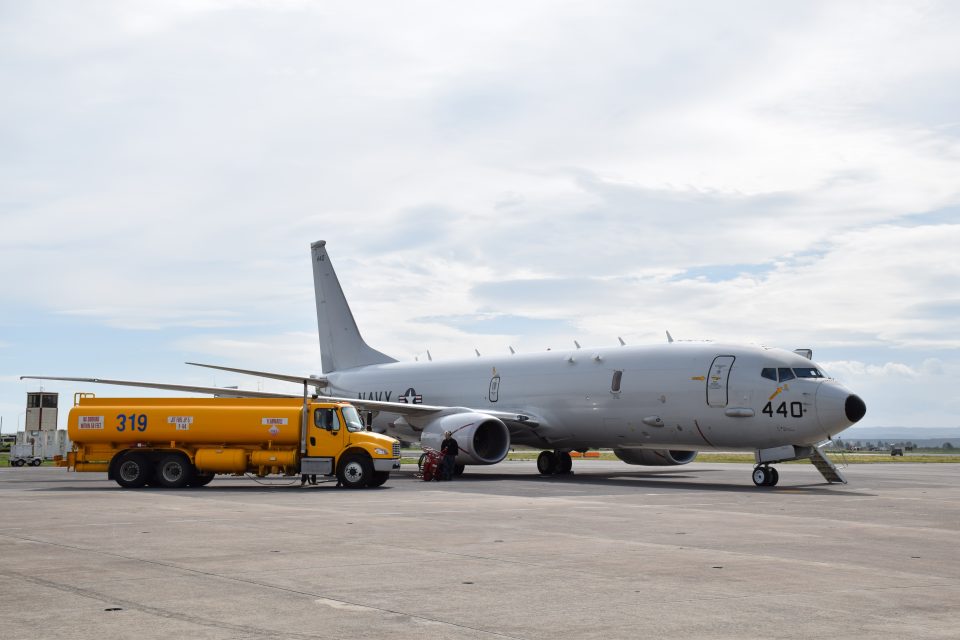2016-05-26 By Robbin Laird and Ed Timperlake
On May 23 and 24, 2016, we visited Jacksonville Naval Air Station and spent time with the P-8 and Triton community which is shaping a common culture guiding the transformation of the ASW and ISR side of Naval Air. The acquisition term for the effort is a “family of systems” whereby the P-3 is being “replaced” by the P-8 and the Triton Remotely Piloted Aircraft.
But clearly the combined capability is a replacement of the P-3 in only one sense – executing the anti-submarine warfare function. But the additional ISR and C2 enterprise being put in place to operate the combined P-8 and Triton capability is a much broader capability than the classic P-3.
Much like the Osprey transformed the USMC prior to flying the F-35, the P-8/Triton team is doing the same for the US Navy prior to incorporating the F-35 within the carrier air wing.
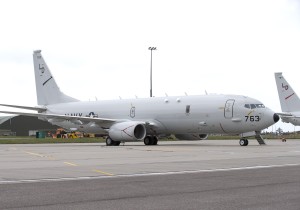
In addition to the Wing Commander and his Deputy Commander, who were vey generous with their time and sharing of important insights, we had the opportunity to interviews with various members of the VP-16 P-8 squadron from CO and XO to Pilots, NFOs and Air Crew members, along with the wing weapons and training officer, the Triton FIT team, and key members of the Integrated Training Center. Those interviews will be published over the next few weeks.
The P-8/Triton capability is part of what we have described as 21st century air combat systems: software upgradeable, fleet deployed, currently with a multinational coalition emerging peer partnership. Already the Indians, the Aussies and the British are or will be flying the P-8s and all are in discussions to build commonality from the stand-up of the P-8 Forward.
Software upgradeability provides for a lifetime of combat learning to be reflected in the rewriting of the software code and continually modernizing existing combat systems, while adding new capabilities over the operational life of the aircraft. Over time, fleet knowledge will allow the US Navy and its partners to understand how best to maintain and support the aircraft while operating the missions effectively in support of global operations.
Reflecting on the visit there are several takeaways from our discussions with Navy Jax which we will discuss more fully in the period ahead as we build out the interviews.
A key point is how the USN is approaching the P-8/Triton combat partnership, which is the integration of manned, and unmanned systems, or what are now commonly called “remotes”. The Navy looked at the USAF experience and intentionally decided to not build a the Triton “remote” operational combat team that is stovepiped away from their P-8 Squadrons.
The team at Navy Jax is building a common Maritime Domain Awareness and Maritime Combat Culture and treats the platforms as partner applications of the evolving combat theory. The partnership is both technology synergistic and also aircrew moving between the Triton and P-8
The P-8 pilot and mission crews, after deploying with the fleet globally can volunteer to do shore duty flying Tritons. The number of personnel to fly initially the Tritons is more than 500 navy personnel so this is hardly an unmanned aircraft. Hence, inside a technological family of systems there is also an interchangeable family of combat crews.
With the P-8 crews operating at different altitudes from the Triton, around 50K, and having operational experience with each platform, they will be able to gain mastery of both a wide scale ocean ISR and focused ASW in direct partnership with the surface navy from Carrier Strike Groups, ARG/MEUs to independent operations for both undersea and sea surface rather than simply mastering a single platform.
This is a visionary foundation for the evolution of the software upgradeable platforms they are flying as well as responding to technological advances to work the proper balance by manned crews and remotes.
The second key point is that the Commanders of both P-8 aviator and the soon to be operational Triton community understand that for transformation to occur the surface fleet has to understand what they can do. This dynamic “cross-deck” actually air to ship exchange can totally reshape surface fleet operations. To accelerate this process, officers from the P-8 community are right now being assigned to surface ships to rework their joint concepts of operations.
Exercises are now in demonstration and operational con-ops to explain and real world demonstrate what the capabilities this new and exciting aspect of Naval Air can bring to the fleet. One example was a recent exercise with an ARG-MEU where the P-8 recently exercised with the amphibious fleet off of the Virginia Capes.
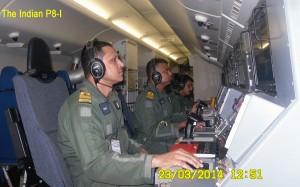
The third key point is that the software upgradeability aspect of the airplane has driven a very strong partnership with industry to be able to have an open-ended approach to modernization. On the aircraft maintenance and supply elements of having successful mission ready aircraft it is an important and focused work in progress both inside the Navy (including Supply Corps) and continuing an important relationship with industry, especially at the Tech Rep Squadron/Wing level.
The fourth point is how important P-8 and Triton software upgradeability is, including concurrent modification to trainer/simulators and rigorous quality assurance for the fidelity of the information in shaping the future of the enterprise. The P-8s is part of a cluster of airplanes which have emerged defining the way ahead for combat airpower which are software upgradeable: the Australian Wedgetail, the global F-35, and the Advanced Hawkeye, all have the same dynamic modernization potential to which will be involved in all combat challenges of maritime operations.
It is about shaping a combat learning cycle in which software can be upgraded as the user groups shape real time what core needs they see to rapidly deal with the reactive enemy. All military technology is relative to a reactive enemy. It is about the arsenal of democracy shifting from an industrial production line to a clean room and a computer lab as key shapers of competitive advantage.
https://sldinfo.com/secretary-hagel-and-the-opportunity-for-industrial-mobilization/
The fifth point is about weaponization and its impact. We have focused for years on the need for a weapons revolution since the U.S. forces, and as core allies are building common platforms with the growth potential to operate new weapons as they come on line. The P-8 is flying with a weapon load out from the past, but as we move forward, the ability of the P-8 to manage off board weapons or organic weapons will be enabled.
For example, there is no reason a high speed cruise or hypersonic missile on the hard points of the P-8 could not be loaded and able to strike a significant enemy combat asset at great distance and speed. There might be a day in future combat when P-8s crews will receive a Navy Cross and Presidential Unit Citation for not only killing an enemy sub but also a P-8 crew sinking a significant enemy surface combatant.
In short, the P-8/Triton team are at the cutting edge of naval air transformation within the entire maritime combat enterprise. And the US Navy is not doing this alone, as core allies are part of the transformation from the ground up.
Editor’s Note: The slideshow highlights Naval Supply Systems Command Fleet Logistics Center Sigonella conducts a refueling evolution on one of the Navy’s newest maritime patrol and reconnaissance aircraft, the P-8A Poseidon, for the first time on board Naval Air Station Sigonella. (U.S. Navy photo by Shannon R. Haney/Released). March 10, 2016.
An example of a recent exercise where P-8 is being introduced to the coalition fleet is the following:
U.S. and Royal Thai navies enhance maritime cooperation during Exercise Guardian Sea
Commander, Logistics Group Western Pacific
The U.S. Navy and the Royal Thai Navy are conducting Exercise Guardian Sea in the Andaman Sea May 23-27. The bilateral naval training aims to enhance cooperation between the two navies in anti-submarine warfare and maritime domain awareness.
“Guardian Sea provides our navies the opportunity and challenge of detecting and tracking submarines, and to practice procedures related to anti-submarine warfare,” said Capt. H. B. Le, commodore, Destroyer Squadron Seven. “This year’s exercise will be the most complex to date and we look forward to working alongside the Royal Thai Navy ashore and at sea to improve our skills and enhance our interoperability.”
This year’s Guardian Sea exercise features the Arleigh Burke class guided-missile destroyer USS Stethem (DDG 63), a P-8A Poseidon maritime patrol craft and a Los Angeles-class submarine operating alongside ships and aircraft from the Royal Thai Navy. Navy personnel from the U.S. 7th Fleet’s Task Force 73 and Destroyer Squadron (DESRON) 7 will also participate in the exercise.
“Guardian Sea is an excellent opportunity to operate at sea in a realistic training environment with our friends and partners in the Royal Thai Navy,” said Cmdr. Doug Pegher, commanding officer, USS Stethem. “Our Sailors gain valuable experiences from these engagements and we build important maritime relationships that endure beyond the exercise.”
Along with operations at sea, the Guardian Sea exercise features a small shore phase that includes symposia and subject matter expert exchanges between the two navies.
Task Force 73 is the U.S. 7th Fleet’s Theater Security Cooperation agent for South and Southeast Asia and supports exercises across the region to include the Cooperation Afloat Readiness and Training (CARAT) series, Southeast Asia Cooperation and Training (SEACAT), the Naval Engagement Activity (NEA) with Vietnam, and the multilateral naval exercise KOMODO.
5/23/16
Editor’s Note: Clearly, the P-8 is a key plank holder in shaping a new approach to North Atlantic defense which can be called the extended defense or kill web.
In this video, the P-8 is seen in its first engagement in the BALTOPs exercise, in 2015.
P-8s at BALTOP 2015 from SldInfo.com on Vimeo.
For a look at the UK evolution, see the following (and with the Norwegians as prime candidates to add P-8 to their Aegis and F-35 systems, Norway is a key player as well):


